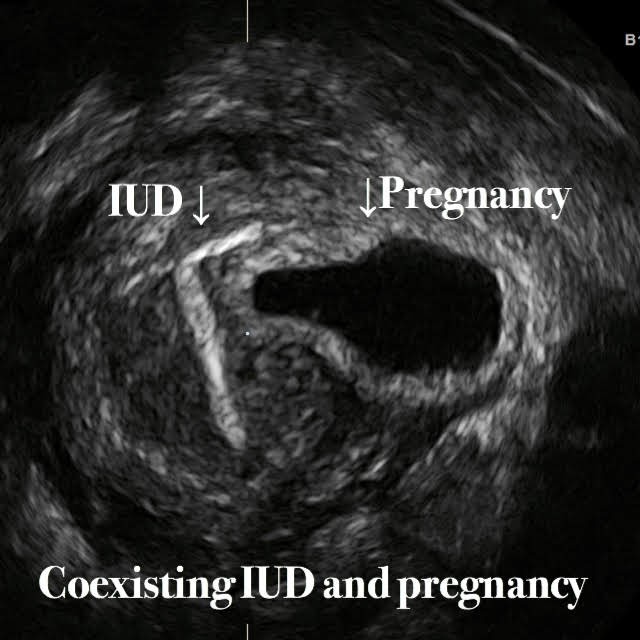After you finish a pregnancy you should take care of other things besides your baby, things that are important to you, unfortunately, one of them is to avoid getting pregnant again right away. I don’t blame you, I wait 4 years to get pregnant with my second baby. Whatever the reason for the wait might be, you need to use something effective that prevents pregnancy for a long period of time.
There are many methods of contraception in the market today, with this article I want to provide you with the most important information about it, so you can make an informed and wise decision if an IUD is right for you.
Different methods of contraception these days are:
1. Female and male sterilization (female tubal ligation or occlusion, male vasectomy) Birth control that prevents pregnancy for the rest of your life through surgery or a medical procedure.
2. Long-acting reversible contraceptives or ” IUD” methods (intrauterine devices, hormonal implants) Birth control your doctor inserts one time and you do not have to remember to use birth control every day or month. This method can last for 3 to 10 years, depending on the method.
3. Short-acting hormonal methods (pill, patch, shot, vaginal ring) Birth control your doctor prescribes that you remember to take every day or month. The shot requires you to get a shot from your doctor every 3 months.
4. Barrier methods (condoms, diaphragms, sponge, cervical cap) Birth control you use each time you have sex.
5. Natural rhythm methods Not using any type of birth control but instead avoiding having sex on the days when you are most fertile (most likely to get pregnant). An ovulation home test kit or a fertility monitor can help you find your most fertile days.
As you can see there are many methods to prevent pregnancy, but how to know which one is appropriate for you.
1 is a permanent choice, which means that, if you are not done having kids, or if you are still very young, this method is not for you.
2 is a long-lasting method, this method does not require you to do anything once you have the IUD. It is very easy and simple.
3 or short-lasting method, includes the pills, patches, shots or vaginal rings, this method is good for someone who is very methodical and always remember to take a pill every day or don’t mind going every 3 months to the doctor’s office to get a shot or a prescription.
4 the most common method, because who has not used a Condom before. But is also a high maintenance one, because you need to remember to carry a Condom every time you need it.
5 or Natural rhythm methods are only effective for those women who have always had a very regular period, and after a pregnancy, more likely your periods will be different for a few months because the hormones have not yet normalized, so if you want to play safe, this is probably NOT A VERY GOOD OPTION for you at this time.

In this article, we will focus on IUDs as a method of contraception.
A method for all those women who want to be sure that they are not going to get pregnant, but do not want to do anything after the IUD is in place. But please know that besides the fact that this method is very convenient it also has side effects that you should know before making a decision.
What is an IUD and how it works?
An intrauterine device (IUD), also known as the intrauterine contraceptive device (IUCD or IUD) is a small, often T-shaped birth control device that is inserted into a woman’s uterus (inside the Endometrium or uterine cavity) to prevent pregnancy by stopping sperm from reaching and fertilizing eggs.
How hormonal IUDs works.
Once placed by the doctor within the uterine cavity, the hormone starts to release inside the uterus causing a reduction on the thickening of your uterine lining.
How non-hormonal IUDs works?
The copper wire coiled around the device produces an inflammatory reaction that is toxic to sperm and eggs (ova), preventing pregnancy.
ParaGard is the only copper IUD available in the United States. It can prevent pregnancy for up to 10 years after insertion.
The types of IUD that exist in the market today are 5, and are named below:
Four of them contains hormones, and are known as Liletta, Kyleena, Mirena, and Skyla as I already say these IUD’s release small amounts of the hormone progestin (levonorgestrel) into your body. It’s the same hormone used in many birth control pills.
These types of IUDs tend to make your period lighter and may be a good option if you have heavy periods. Liletta, Kyleena and Mirena IUD’s last for 5 years and Skyla due to the lower dose of hormone last 3 years.
The fifth is the ParaGard, also called the copper T IUD. It’s hormone-free. As I explained before the copper triggers your immune system by producing an inflammatory reaction that is toxic to sperm and eggs, to prevent pregnancy. It can cause your periods to be heavier, especially at first. But ParaGard can last up to 10 years, longer than hormonal IUDs.
What to expect during and after placement of an IUD?
During the IUD placement, you may experience pain, bleeding or dizziness, but your symptoms should pass within 30 minutes after the placement. If after 30 minutes to 1 hour after the placement you are still feeling severe symptoms you need to contact your doctor, chances are that the IUD was placed incorrectly.
You should avoid all together hormonal IUD if you have any medical history of.
- Liver diseases or tumors.
- Any history of breast or ovarian cancer.
- You have already an IUD inside your uterus.
- History of Large fibroid within the cavity.
- Have allergies to Levonorgestrel( hormone), silicone, polyethylene, silver, silica, barium sulfate, cooper or iron oxide.
In general, all hormone IUDs will decrease or even stop your menstrual cycles. The active ingredient of these IUDs is levonorgestrel in different doses:
- Mirena: contain 52 mg Levonorgestrel.
- Skyla: contain 13.5 mg Levonorgestrel.
- Liletta: contain 52 mg levonorgestrel.
- Kyleena: contain 19.5 mg Levonorgestrel.
IUD’s hormonal options are great for women who want to have their period reduce. The downside is the constant release of the hormone in their body’s.
The ParaGard downside is that users may experience more regular periods since the lack of hormones means the body is running on its natural cycle. It’s a good choice if you know you want to experience a period every month. But, without those hormones, periods can be longer and heavier with more cramps, especially during the first six months after the ParaGard insertion.
In general, IUDs are very effective at preventing pregnancy better than the pill and once it’s in place, you don’t have to think about it.
Related posts.
Having a baby on a budget, 9 easy and powerful tips to do it.
Enjoying the article? Pin it here!
Side effects of IUDs.
- Pain, bleeding or dizziness during and after insertion due to uterine perforation: Very unlikely to happen really. Doctors have a way to measure and check the shape of the uterus before insertion to avoid perforation. However, if you are experiencing severe symptoms 1 hour after insertion, call with your doctor immediately.
- Expulsion: Any type of IUD has a risk of coming out by itself. This is called expulsion, therefore, you may become pregnant if the IUD is out.
- Missed menstrual periods: Mainly with hormonal IUD’s. Your periods will get lighter and more likely even stop after 1 year of using the IUD. If you remove the IUD after a few months you should expect to have back your periods.
- Changes in bleeding patterns: You may experience abnormal bleedings and/or spotting between menstrual cycles. Especially during the first 3 to 6 months. Always call your doctor if you are experiencing heavy or unusual bleeding.
- Cyst on the ovaries: Ovarian cysts may occur on the ovaries when using hormonal IUD, mainly Mirena or Kyleena. These cysts usually disappear on their own in 2 to 3 menstrual cycles. Large cysts can cause pelvic pain, and in some cases, If the cyst grows more than expected, might need surgery.
Another common side effect of hormonal IUDs include:
- Inflammation or infection of the vagina
- Abdominal or pelvic pain
- Headaches or migraines
- Acne or changes on the skin
- Painful periods( mainly for ParaGard )
- Sore or painful breasts
- Changes in vaginal bleeding
- Weight gain
Avoid Hormonal IUD all together if:
- Are or might be pregnant at this time.
- Have a history of pelvic inflammatory diseases ( PID ) on the past
- Have an untreated pelvic infection at this time
How you get PID’s or pelvic infections?
- Only if you have multiple sexual partners
- Have any serious diseases were your immune system is compromised
- Abuse intravenous drugs
- Have or suspect you might have uterine cancer
How an IUD is evaluated on Ultrasound?





In conclusion:
Of all the contraceptive methods that exist, the IUD is one of the safest methods despite all the side effects it has. In my case, I have experience with IUD MIRENA, and the only thing that has affected me is that I have gained a few pounds since I have it. If you are going to try a hormonal IUD I recommend that you follow an active lifestyle, doing moderate exercises for at least 3 days per week and eating a healthy and balanced diet.
Always consult and let your doctor know of pre-existing illness and let the doctor based on your case tell you if the IUD with hormones or without hormones is the ideal option for you. If you have an IUD, it is necessary to perform a routine ultrasound scan and doctor check-ups annually, to check the position of the IUD.
So this is the end of this post, I hope it was informative and helpful to you. If you have any comments leave them here.
Zadi, XO.











Awesome sharing! I haven’t really explore IUD as I’m using the natural method. But I’ll keep this in mind, just in case anyone or myself need it in the future!
Thank you for comment, I been using the Mirena for 3 years and I really like it, and the fact that the periods are extremely light is a plus, I always recommend my patients to give it a try in case they need contraception, because I also understand that IUD’s are not for everyone, the majority of my patients like them too
Oh yes, and I heard it’s very effective! Looking forward for more sharing from you 🙂
Thanks love, for comments like yours I get inspired every day, I am looking forward to share more with you and read your awesome posts too?
[…] Related post: All about IUD or Intrauterine device. […]
[…] All about IUD or Intrauterine device. […]
I do agree with all of the ideas you’ve presented in your post. They’re very convincing and will definitely work. Still, the posts are too short for newbies. Could you please extend them a little from next time? Thanks for the post.